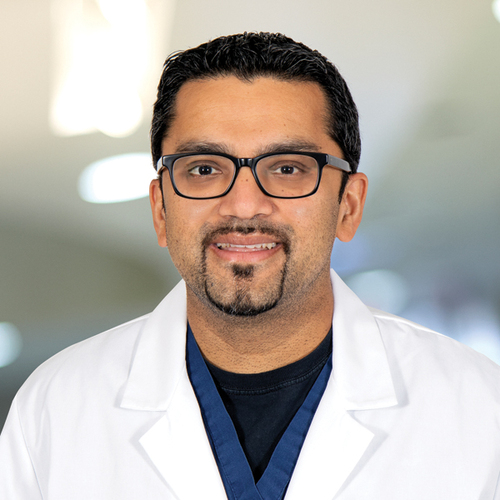Robotic Bronchoscopy
Innovative Technology to Help Your Care Team Diagnose Lung Cancer
One of the most exciting advances in lung cancer care today is robotic bronchoscopy. The Christ Hospital was one of the nation's first healthcare systems in the country to use this technology, which can help diagnose lung cancer in the early stages.
Doctors use robotic bronchoscopy to detect small lung nodules (abnormal growths). These nodules are common and usually harmless. But sometimes, they are cancerous. Cancerous lung nodules can grow in the lungs and spread before a person notices any symptoms. The sooner your doctor discovers cancerous lung nodules, the better your chance for effective treatment.
Robotic bronchoscopy:
Detects small lung nodules in hard-to-reach areas of the lung
Allows the doctor to take a biopsy (tissue sample) of the nodule for testing
Does not involve surgery
Is precise and has a lower risk of complications than previous biopsy methods
Who needs robotic bronchoscopy?
If you had a chest X-ray or computerized tomography (CT) scan that found one or more lung nodules, your doctor might refer you to the Lung Nodule Clinic at The Christ Hospital. This clinic provides comprehensive testing and treatment for people with lung nodules. The care team will develop a personalized plan of care for you, which may include robotic bronchoscopy.
What does robotic bronchoscopy involve?
Robotic bronchoscopy is performed under sedation by a doctor with specialized training. The doctor places a bronchoscope (a thin, flexible tube equipped with a light and camera) into the patient's mouth or nose. Then, using robotic technology and computer-assisted navigation, the doctor extends the bronchoscope down the patient's airway to reach outer ("peripheral") areas of the lung, where tiny nodules can hide.
Images of the airway and lungs appear on a video monitor. The doctor may slide tiny surgical tools through the bronchoscope to take a biopsy for testing. After this procedure, the doctor will talk to you about the results and the next steps in your care.
Compared to earlier biopsy procedures, which used rigid scopes or surgery, this method is more precise and less invasive.
How Robotic Bronchoscopy Improves Lung Cancer Care
Lung cancer is the deadliest form of cancer. Once lung cancer symptoms appear, the cancer is usually advanced and may have spread to other parts of the body.
The addition of robotic bronchoscopy at The Christ Hospital is part of our commitment to fighting lung cancer. This advanced technology helps our team perform the most accurate diagnosis of small and hard-to-reach lung nodules – finding cancer earlier to give our patients the best possible outcome.
The Monarch system isn't used for treatment/nodule removal at this time according to what I'm seeing on its manufacturer's webpage and other hospital sites. So I reworked the copy to focus on the technology's diagnostic capabilities only.
Meet our Robotic Bronchoscopy Physicians

5 of of 5 Stars
208 Ratings
Primary Location
2123 Auburn Ave., Suite 401
Cincinnati, OH 45219
(513) 241-5489
39.126983
-84.516133
Critical Care, Interventional Pulmonology, Chronic Obstructive Pulmonary Disease (COPD), Lung Nodules
See all
|

4.9 of of 5 Stars
171 Ratings
Primary Location
2123 Auburn Ave., Suite 401
Cincinnati, OH 45219
(513) 241-5489
39.126983
-84.516133
Critical Care, Interventional Pulmonology, Chronic Obstructive Pulmonary Disease (COPD), Lung Nodules
See all
|